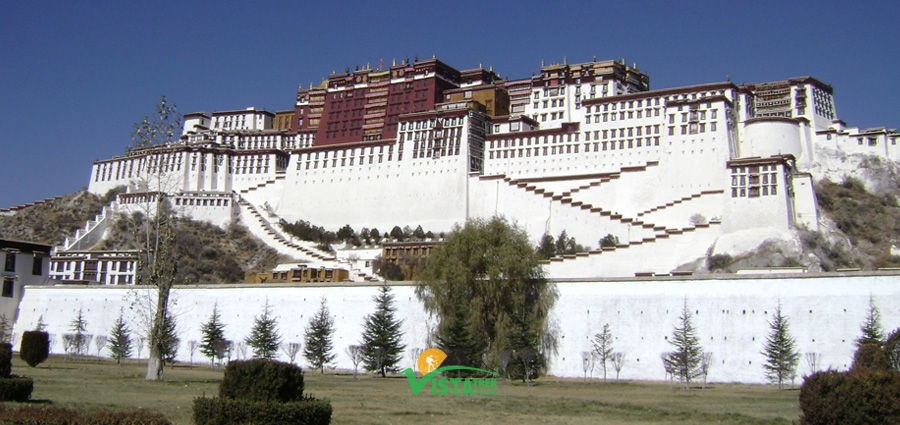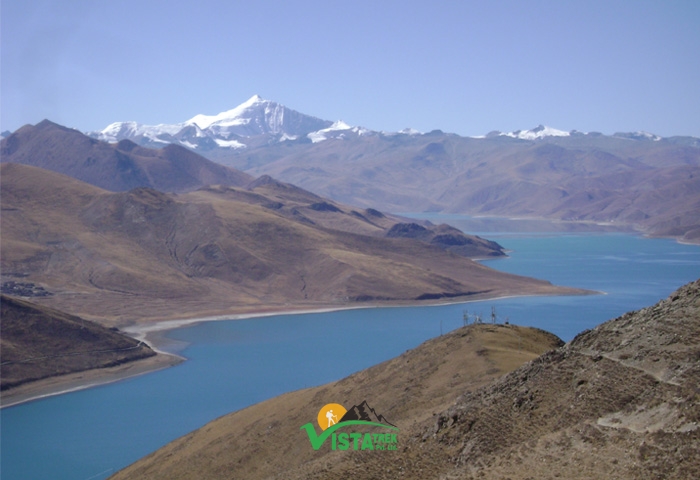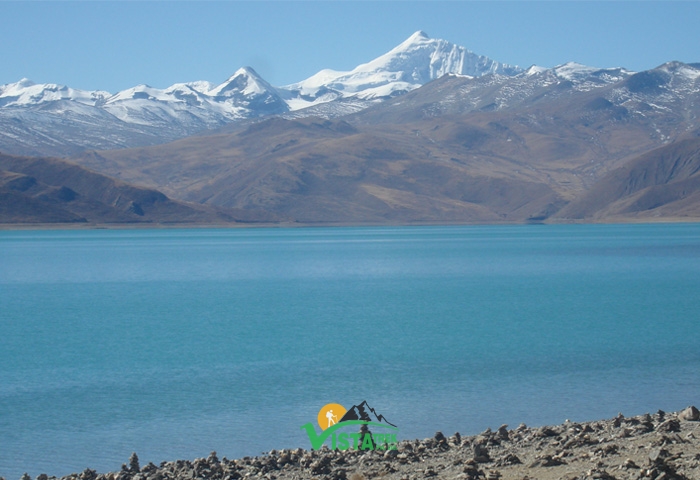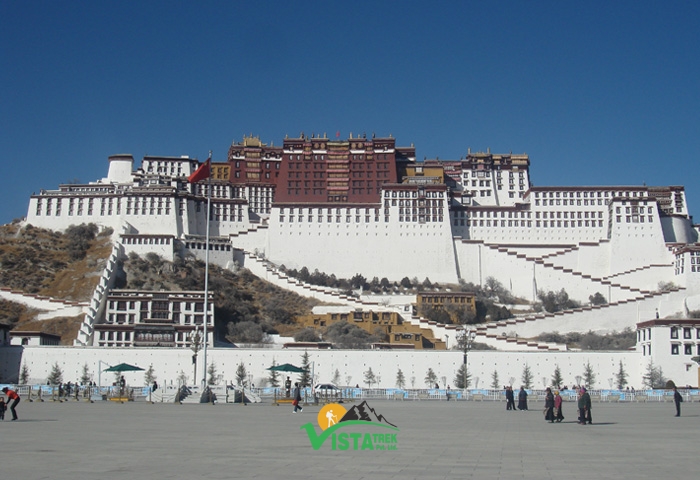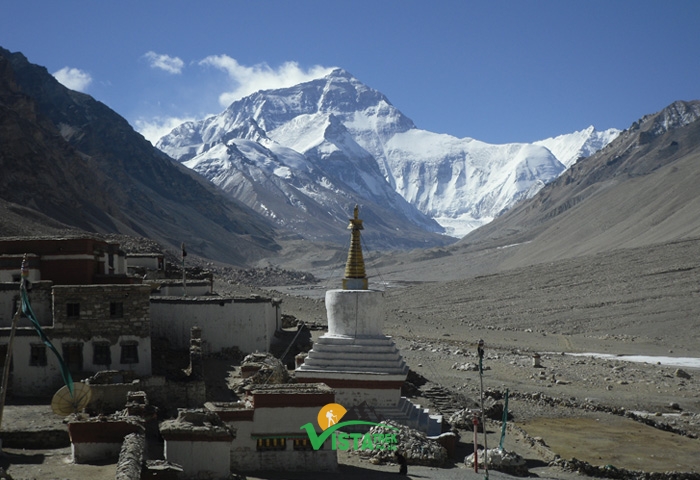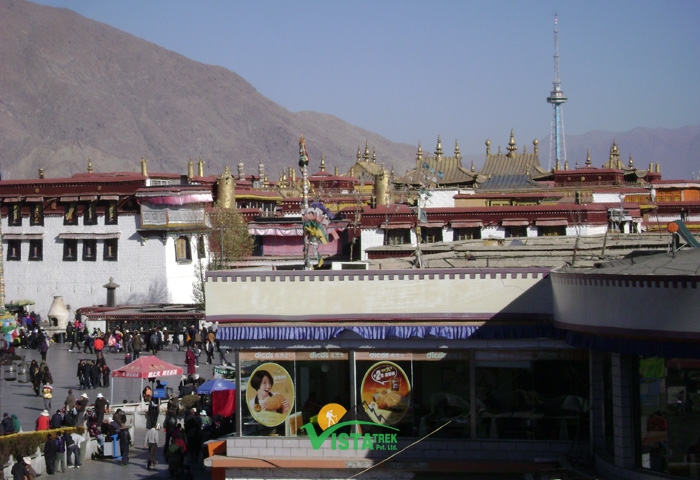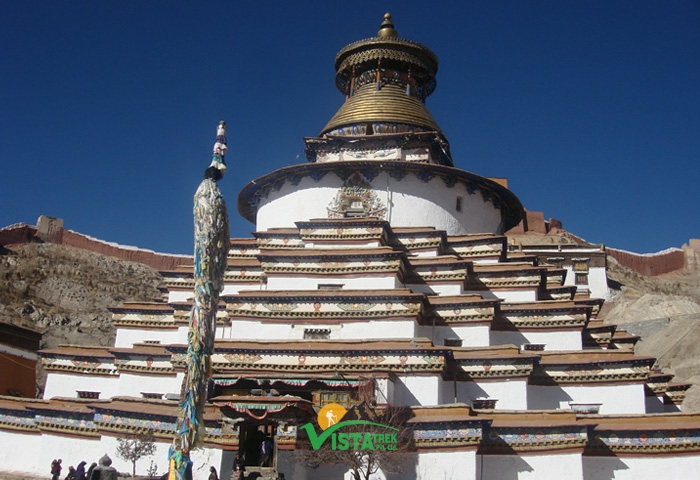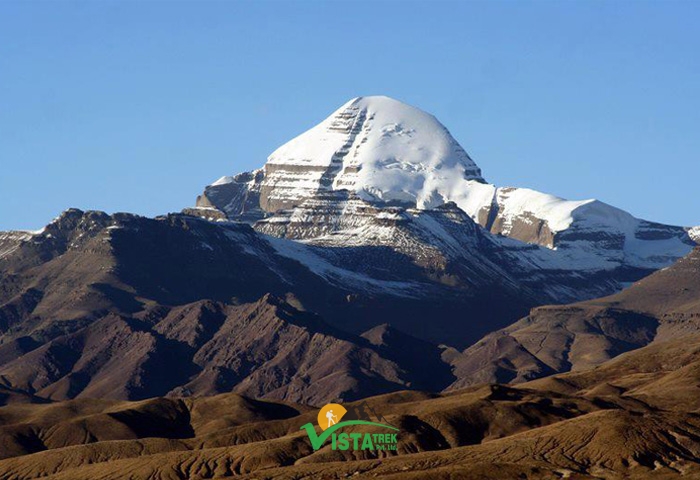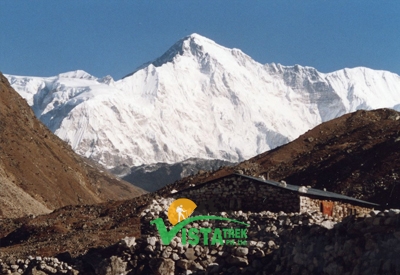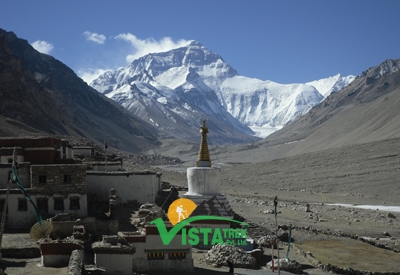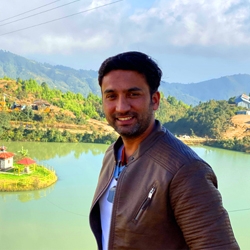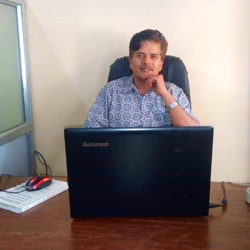Trip Facts
- Duration 9 Days
- Start FromKathmandu
- Group Size1-10 Pax
- End FromLhasa
- Trip GradeEasy to Moderate
- Max Height 3650 m
- AccommodationHotel/Lodge/Guesthouses
- TransportationPlane, Helicopter, Private vehicle & Tourist Bus
Best Season
April to June & September to November
Trip Highlights
- Explore the ancient cultural wonders of Kathmandu Valley.
- Old heritage sites such as Swoyambhunath Stupa, Pashupatinath, Boudhanath, Bhaktapur Durbar Square, and Kathmandu Durbar Square in Kathmandu.
- Drive through the scenic Nepal to the Tibet border via Kerung.
- Discover traditional Tibetan monasteries in Shigatse and Gyantse.
- Visit Potala Palace, Jokhang Temple, and Barkhor Market in Lhasa.
- Experience the rich blend of Nepali and Tibetan culture in one trip.
- Optional visit to Everest Base Camp (Tibet side).
Trip Overview
The Kathmandu Lhasa Cultural Tour is a once-in-a-lifetime journey from the heart of Nepal to the spiritual capital of Tibet. This overland cultural adventure spans 9 days, allowing travelers to witness the dramatic transition from the lush hills of Nepal to the arid highlands of Tibet. Beginning in the vibrant streets of Kathmandu, you’ll travel across the Nepal-Tibet border at Kerung and make your way through the picturesque towns of Tingri, Shigatse, and Gyantse before reaching the holy city of Lhasa.
This tour is perfect for those seeking a deep cultural experience combined with a scenic Himalayan drive. You’ll visit UNESCO World Heritage Sites in Nepal and sacred Tibetan monasteries, making this a meaningful journey both spiritually and visually.
Trip Itinerary
Your adventure begins as you arrive in the capital of Nepal—Kathmandu. A representative will be at the airport to welcome you and transfer you to your hotel. After check-in, there will be a short trip briefing about your upcoming overland journey to Tibet. You can take it easy in the evening with a relaxing walk around Thamel, Kathmandu’s lively tourist hub filled with cafes, shops, and local culture. It’s a perfect time to adjust to the altitude and soak in your first impressions of Nepal.
Today, you’ll explore the cultural treasures of the Kathmandu Valley after breakfast. The day includes guided visits to Pashupatinath Temple (the holiest Hindu site), Boudhanath Stupa (one of the largest Buddhist stupas in the world), Swayambhunath (Monkey Temple), and Patan Durbar Square, a hub of ancient Newar architecture. These sites are all UNESCO World Heritage Sites and provide a deep insight into Nepal’s rich spiritual and historical background. Overnight stay in Kathmandu.
Fly to Lhasa crossing over the highest Himalayan ranges of the world (1Hr). Your overland tour officially starts today as you drive along the scenic Trishuli Highway. The road passes through lush hills and riversides until you reach the Nepal-Tibet border at Kerung. After immigration formalities, you’ll enter Tibet and settle into a guesthouse in Kerung. This is your first night in Tibet, so a relaxed pace is essential for altitude adjustment.
After breakfast, enjoy a full-day sightseeing tour in Tsedang. The day’s highlights include a visit to the historic Yambulakhang Palace and the revered Tandruk Monastery, offering rich insights into Tibetan culture and history. Overnight stay at a hotel in Tsedang.
This day is dedicated to exploring the spiritual and historical highlights of Lhasa. You’ll visit the iconic Potala Palace, once the winter residence of the Dalai Lama, with its towering white walls and golden roofs. Then head to the sacred Jokhang Temple, the spiritual center of Tibetan Buddhism, followed by a walk around Barkhor Street, a traditional pilgrimage path and vibrant market. Overnight in Lhasa.
Departure to the Airport and fly back to Kathmandu. Pick up from the airport and transfer to the hotel. Overnight at the Hotel in Kathmandu.
After breakfast, drive to Nagarkot for a mountain view. On a clear day, you can expect to see a long range of the Himalayan Panorama, including popular Mt. Manaslu, Mt. Ganesh Himal, Mt. Langtang, Mt. Jugal, and Mt. Gauri Shankar. We then drive to Bhaktapur Durbar Square. Bhaktapur is an ancient town of Kathmandu and oldest Durbar Square out of 3 Durbar Square in Kathmandu. This place is famous for Dattatraye Temple, Five Stories Nyatapol Temple, Bhairav Temple ,and more. Overnight at the hotel in Kathmandu.
If you have a morning flight, we leave for Tribhuwan Intl Airport early morning in a car arranged by the office. If your flight is in the late afternoon or evening, only your will shall dictate your involvement or indulgence before leaving for Tribhuwan Intl Airport in the vehicle.
Cost Includes
- Pick up from the Kathmandu airport
- Hotel in Kathmandu with breakfast
- Kathmandu tour with private car, Tour Guide, and Entrance Fee
- Tibet Travel permission and permits
- Both ways: Flight from Kathmandu – Lhasa – Kathmandu
- All land transportation in Tibet.
- Budget Hotel accommodation (Private single room), with breakfast included in Tibet.
- A Tibetan English-speaking guide.
- Entrance fees are required for monasteries and temples in Tibet.
- All taxes and our service charge
Cost Excludes
- International airfare and visa fees
- Lunch, dinner, and drinks in Tibet and Nepal
- Travel insurance
- Personal expenses and tips to the staff and the driver.
- The cost of emergency evacuation in the event of a natural disaster.
Useful Info
Planning a Kathmandu to Lhasa tour is exciting, but knowing some key travel information can make your journey smoother, safer, and more enjoyable. Here’s a detailed breakdown of the essentials you should be aware of:
Visa & Permits
To enter Tibet from Nepal, travelers must secure two key documents:
- Tibet Travel Permit: Issued by the Tibet Tourism Bureau, this is mandatory for all foreign travelers entering Tibet. Without it, you won’t be allowed to board any flight or vehicle heading into the region.
- Chinese Group Visa: Even if you already have a Chinese visa, it won’t be valid for entry into Tibet from Nepal. Instead, you’ll need to apply for a Group Visa through the Chinese Embassy in Kathmandu. This visa is linked to your group and travel itinerary.
Important Tip: Both documents can be arranged by a registered travel agency and typically require at least three working days in Kathmandu. So, plan your arrival accordingly to avoid delays.
Altitude Sickness
Tibet lies on the high-altitude Tibetan Plateau, and cities like Lhasa are located at elevations above 3,600 meters (11,800 feet). Traveling overland from Kathmandu means you’ll gradually ascend to these heights, but altitude sickness remains a risk.
Symptoms can include:
- Headache
- Dizziness
- Fatigue
- Nausea
- Shortness of breath
Acclimatization Tips:
- Take it slow during the first few days.
- Drink plenty of water and avoid alcohol.
- Consider medication like Diamox if you have a history of altitude issues.
- Inform your guide if you feel unwell.
Gradual ascent from Kathmandu helps in adjusting, but staying aware and taking precautions is crucial.
Currency: Chinese Yuan (CNY)
The official currency in Tibet is the Chinese Yuan (Renminbi – CNY). It’s important to carry enough cash, especially if you’re traveling beyond Lhasa into more remote regions where card payment or ATMs may not be available.
Exchange Tips:
- Exchange in Kathmandu is not always favorable, so it’s better to wait until you’re in Lhasa or Shigatse for more competitive rates.
- Major hotels and banks in Lhasa provide exchange services.
- Keep small bills for local purchases, meals, or tips.
- Having Yuan on hand ensures smooth transactions, especially in markets or small shops.
Connectivity
While Lhasa and major cities like Shigatse have decent internet and mobile coverage, remote and rural areas in Tibet still struggle with limited connectivity.
Stay Connected Advice:
- Buy a Chinese SIM card in Lhasa (your guide can help you with this).
- Expect very limited Wi-Fi in monasteries or villages.
- VPN apps are needed to access platforms like Google, WhatsApp, Facebook, etc., due to China’s internet restrictions.
- Don’t rely on being online at all times. Download maps, translations, and guides beforehand.
Cultural Etiquette
Tibet is not just a destination—it’s a deeply spiritual region with strong religious traditions. Respecting the local culture is essential, especially when visiting monasteries, temples, and interacting with monks or locals.
Etiquette Rules:
- Dress modestly, especially in religious sites.
- Always walk clockwise around stupas and religious monuments.
- Don’t point at people or religious objects with your fingers.
- Ask permission before taking photos, especially of monks or inside temples.
- Avoid discussing sensitive topics like politics or religion.
- Being polite and respectful helps you connect better with locals and ensures a culturally responsible journey.
Best Seasons to Start the Kathmandu-Lhasa Cultural Tour
Choosing the right time for your journey can make a huge difference in your overall experience. Weather conditions across the Himalayas and Tibetan Plateau can change rapidly, affecting both safety and visibility.
Ideal Months to Travel:
- April to June (Spring to early summer):
The snow has melted, the roads are accessible, and the skies are generally clear. The scenery is lush and vibrant, especially near Kathmandu and along the Friendship Highway.
- September to November (Autumn):
Post-monsoon, the air is fresh, the skies are crystal clear, and the mountain views are stunning. Temperatures are cooler but still comfortable, making it ideal for sightseeing and photography.
During these months, you’ll enjoy:
- Safe and smooth road conditions.
- Bright and clear views of Everest and the Himalayas.
- Pleasant temperatures in both Nepal and Tibet.
Months to Avoid:
- July to August (Monsoon Season):
These months bring heavy rains in Nepal and occasional road blockages. Landslides on the highway from Kathmandu to the Tibet border are common, causing travel delays and safety risks. In Tibet, though the rainfall is lighter, visibility is often poor due to cloud cover.
At The End
The Kathmandu to Lhasa Cultural Tour is a once-in-a-lifetime journey filled with breathtaking landscapes and deep spiritual experiences. But proper preparation is key. Make sure you have the right visas and permits, plan for altitude changes, carry enough local currency, and respect cultural traditions. And most importantly, travel during the best seasons—April to June or September to November—for an unforgettable adventure.
Trip FAQ's
Yes, you can travel from Nepal to Tibet overland via Kerung. This is one of the few international land crossings into Tibet.
No. A separate Tibet Group Visa is mandatory and must be obtained in Kathmandu.
Yes, but it's important to take proper precautions against altitude sickness.
Absolutely! The trip can be extended to include EBC (Tibet side) upon request.
Prices vary depending on group size and season. Contact us for exact Tibet tour price and discounts.




